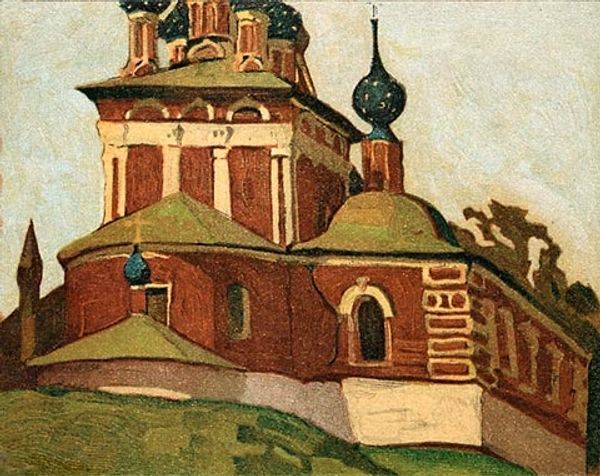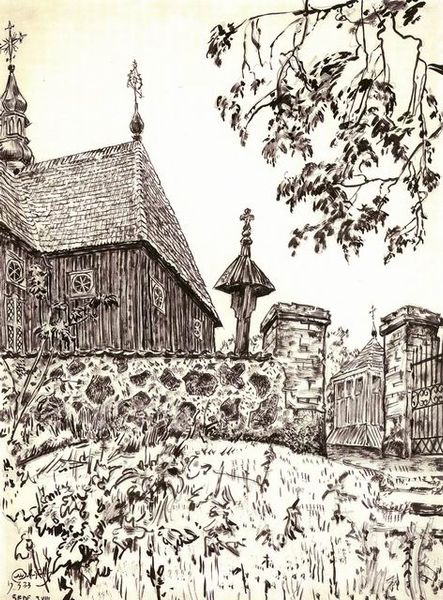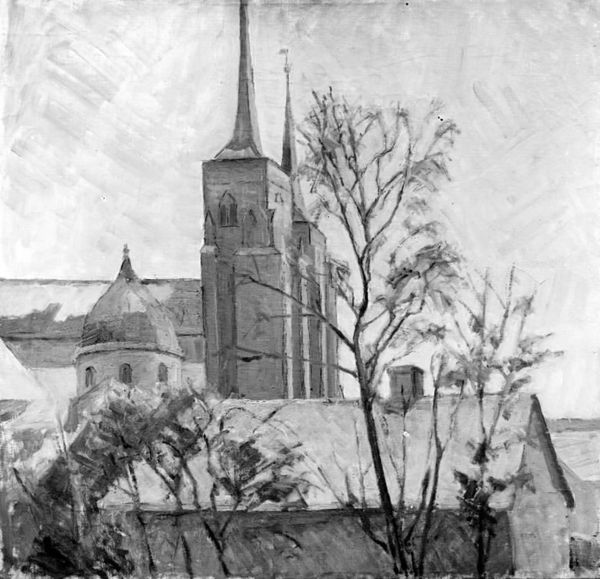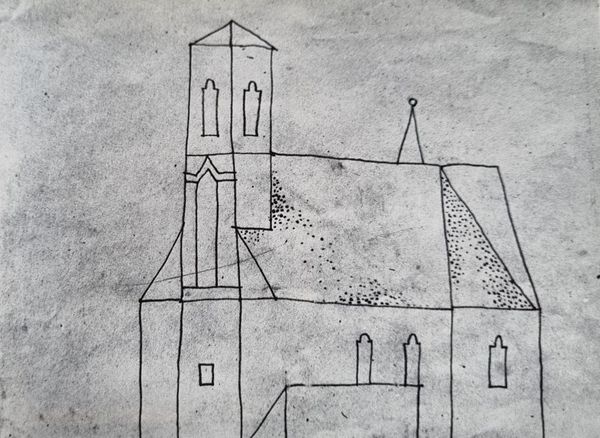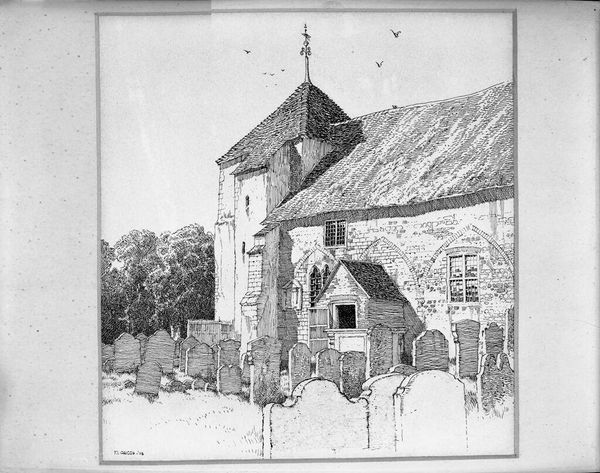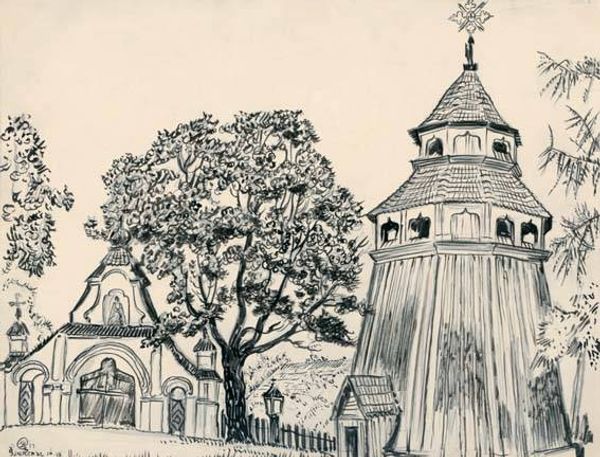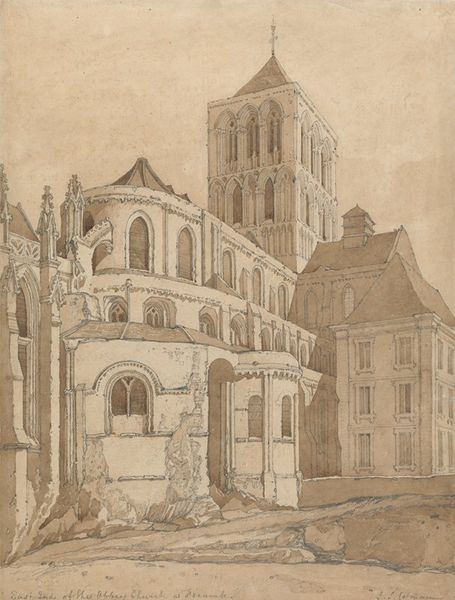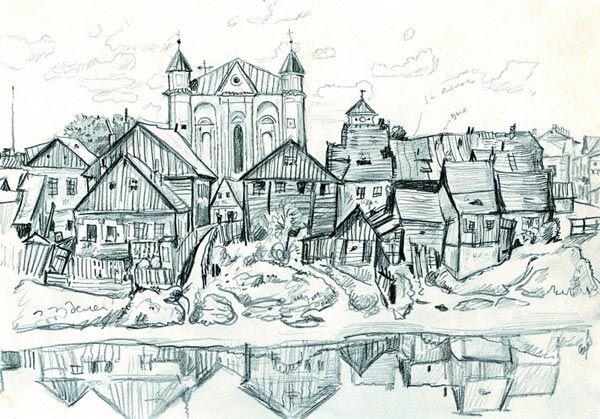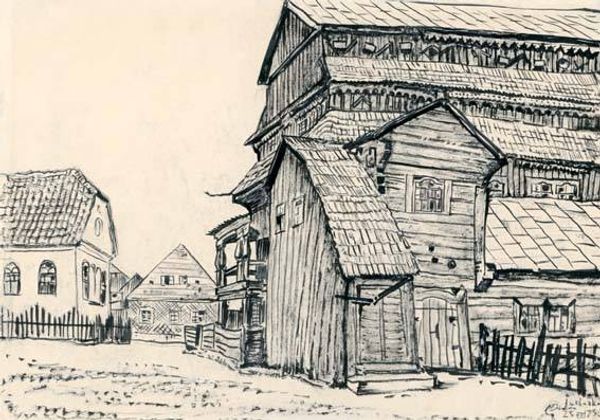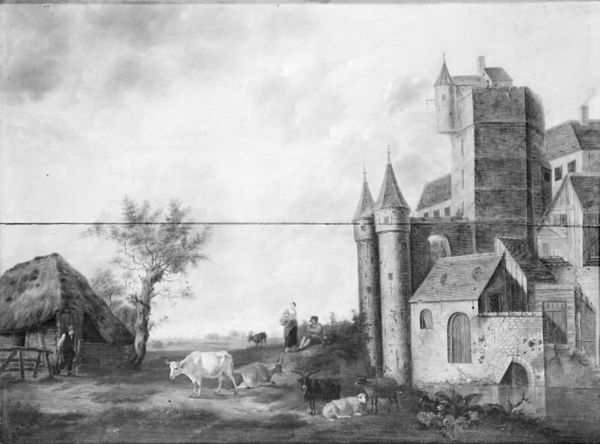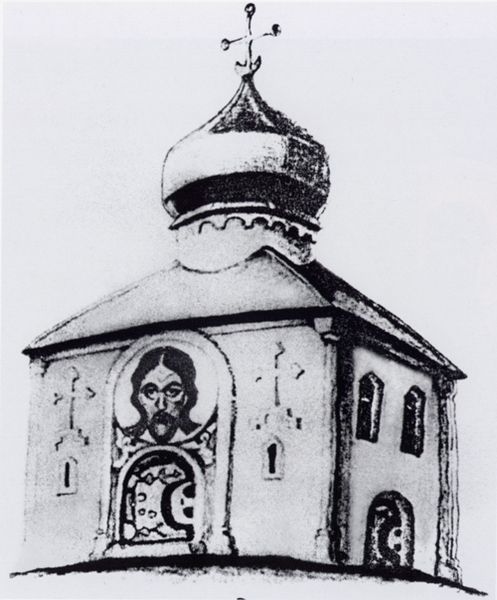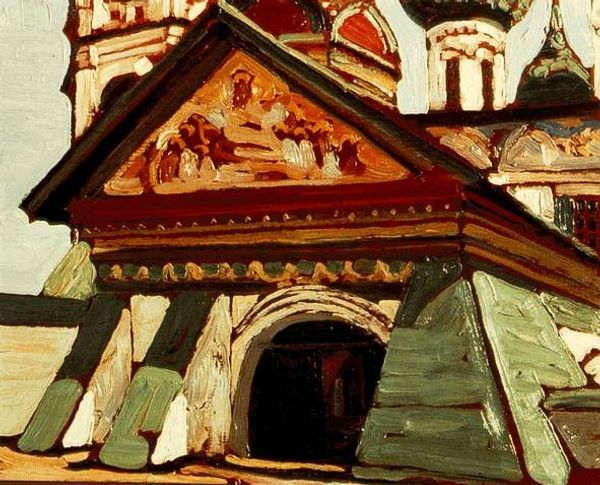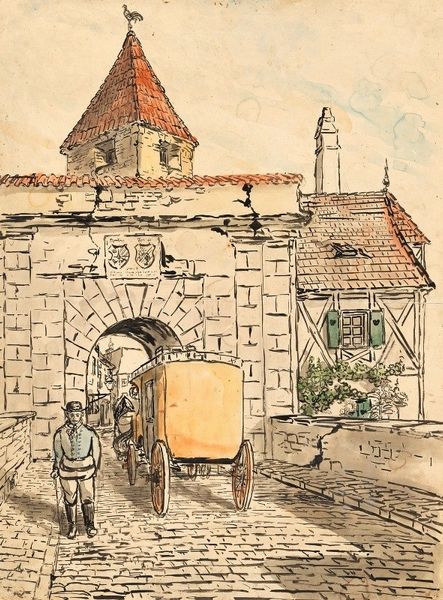
Dimensions: 48.5 x 38.5 cm
Copyright: Mstislav Dobuzhinsky,Fair Use
Curator: Here we have Mstislav Dobuzhinsky's "Kaunas. Saric Church," created in 1930 using watercolor, colored pencil, and other mixed media. What are your first thoughts on this piece? Editor: Well, it’s immediately…melancholic. That stark white church against the muted grays and that almost gothic-looking, gnarled tree…it speaks of survival and perhaps a hint of loneliness. Curator: I see what you mean. Dobuzhinsky, of course, was deeply affected by the rapidly changing urban landscapes of the early 20th century. You sense that in this image? Editor: Absolutely. It's as if he's saying, "Here's a fragment of the past holding its ground as everything rushes forward." The architecture seems very intentionally rendered, almost idealized and standing defiant amidst the more vaguely indicated present of the streets and trees. There’s even the red of the roofs suggesting it is not fully subdued by time. Curator: Yes, there is tension here, a visual argument perhaps about what society chooses to preserve. He rendered it during a brief return to Kaunas after years of emigration, and the church became, for him, a potent symbol. I wonder, do you get the impression he’s offering criticism or mourning what’s left behind, the architecture being his primary subject? Editor: I hesitate to say criticism. There’s too much fondness in his attention to detail in the depiction of its structural elements. It’s more like a quiet contemplation of what remains, perhaps with a tinge of regret that these architectural mainstays can not represent or contain an equally stalwart moral compass. Curator: An interesting reading. Dobuzhinsky's ability to imbue cityscapes with emotional resonance is remarkable. It's that interplay of personal sentiment and historical observation that makes his work so compelling. Editor: Right? The technical rendering may be understated, but the feeling the piece leaves you with lingers. I feel invited to supply an narrative for what I can only see as fragments. Curator: Absolutely. It encourages us to look beyond the surface and consider the layers of history and emotion embedded in the urban landscape. I hadn’t thought so pointedly about fragments… very good. Thank you. Editor: Thank you. Always a pleasure to see art from new angles.
Comments
No comments
Be the first to comment and join the conversation on the ultimate creative platform.
